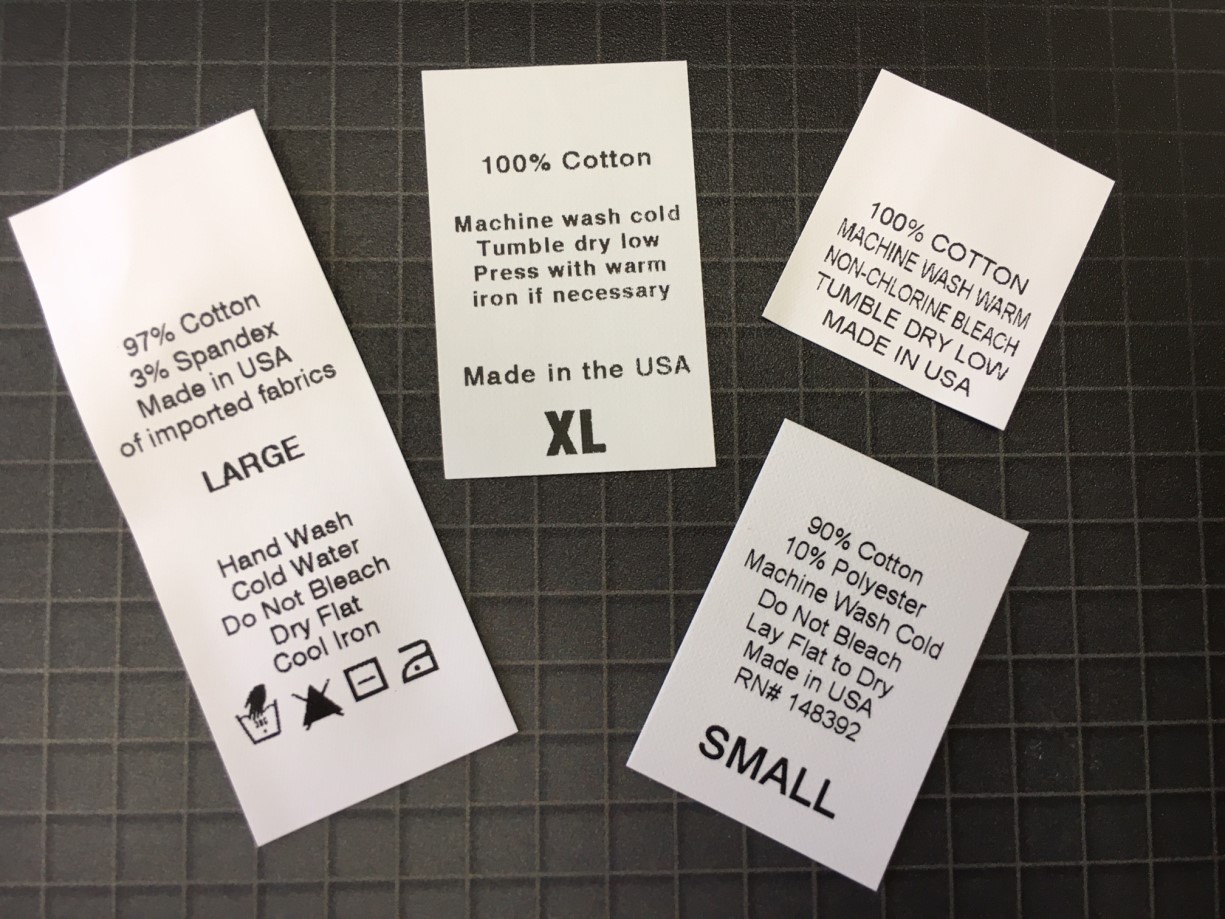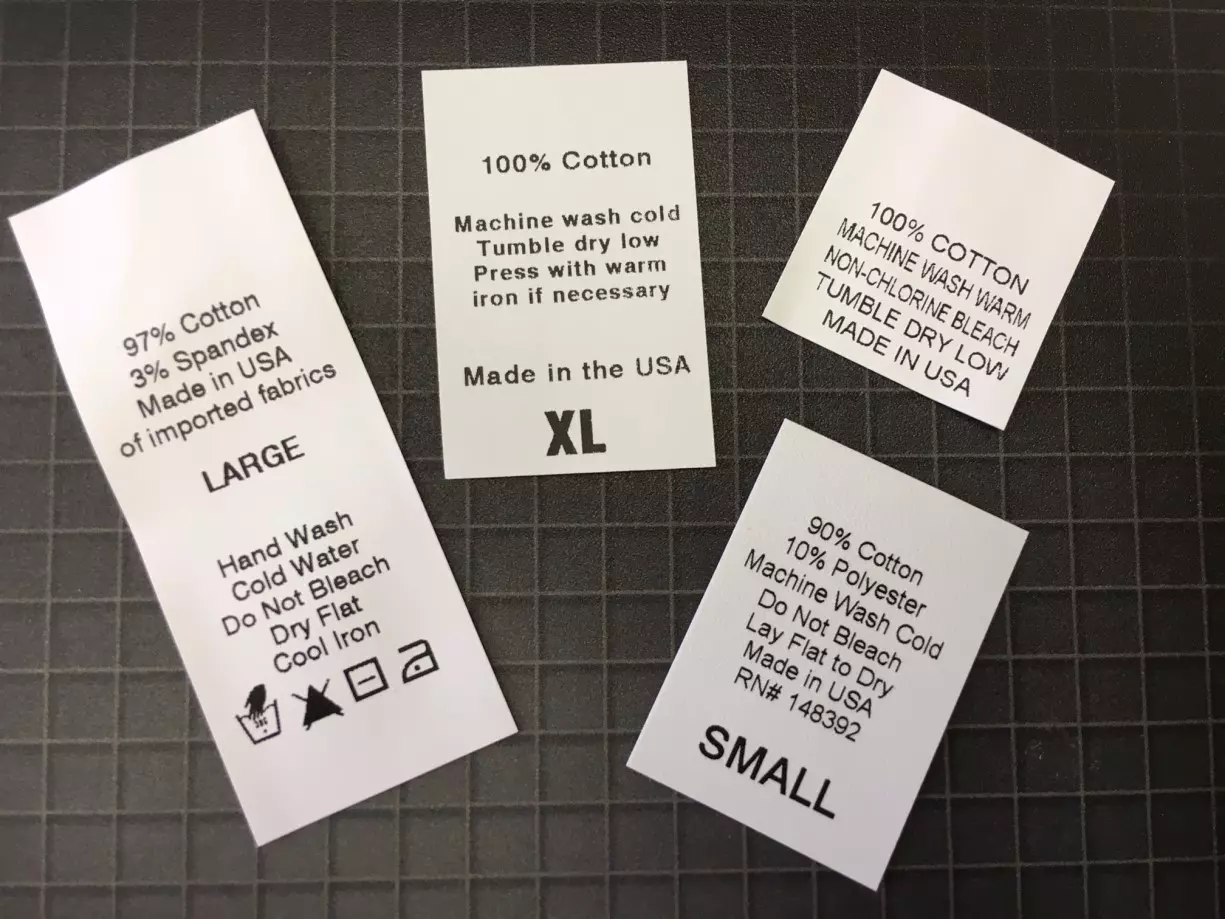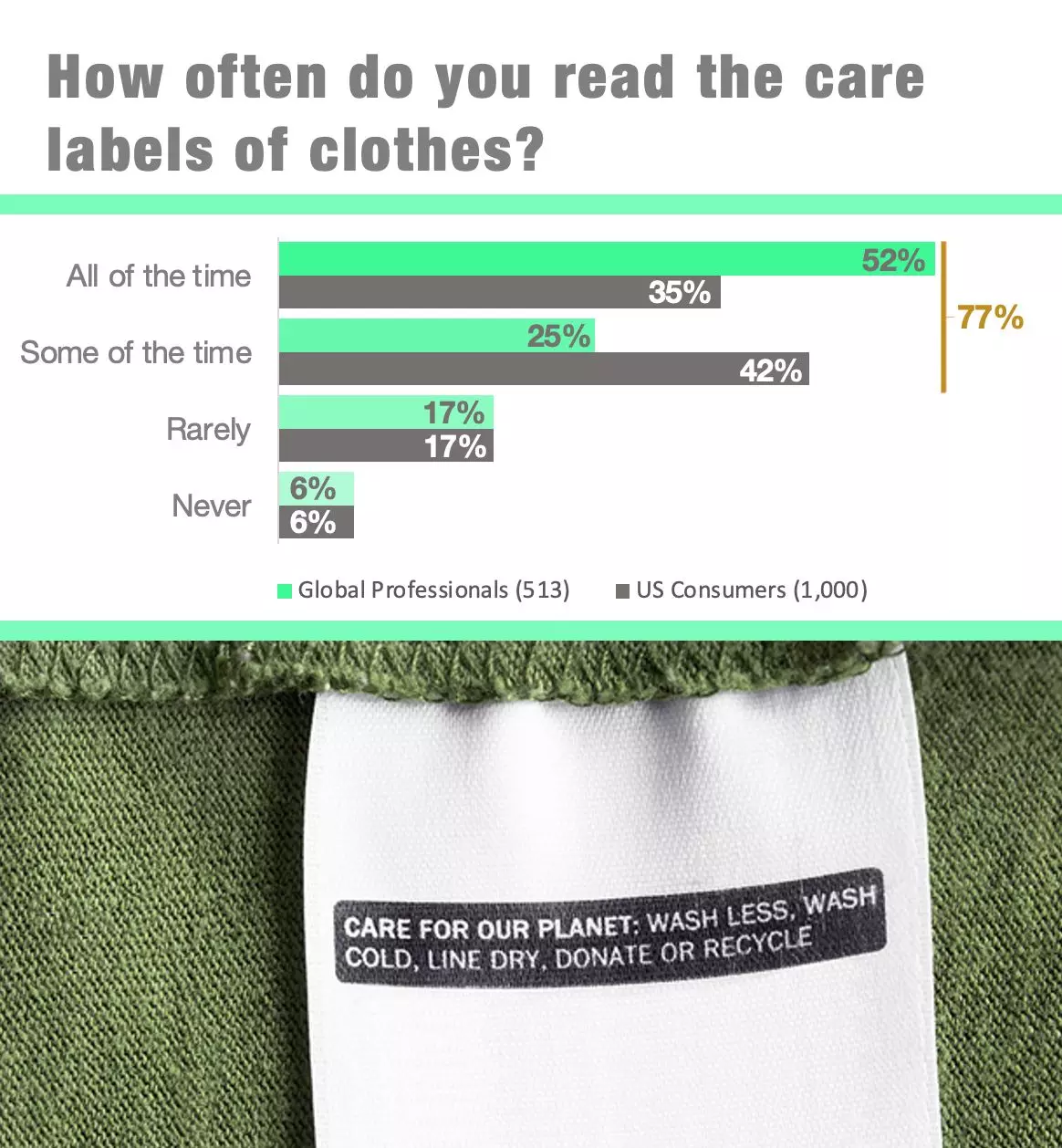Comments
- No comments found

It's important to ensure that labels stay on clothes and read them before using laundry services.
A care label provides clear instructions to consumers about apparel care.
It also provides the best cleaning procedures to be used for a particular combination of fabric, thread decoration and construction techniques.
Respecting the instructions on the care labels is essential to preserve garments following repeated cleaning treatments.
From a fashion company viewpoint, damage to garments from incorrect cleaning methods can result to several complaints.
Consumers prefer garments with ease of care instead of garments with complicated care procedures.
Here are a few factors that can influence how often care labels are read:
Familiarity with Fabrics: People who are knowledgeable about different types of fabrics and their care requirements might feel more confident about caring for their clothes without consistently checking labels.
New Items: Many individuals are more likely to read care labels on clothes that are new to them or made from materials they are less familiar with.
Garment Value: People might pay more attention to care labels on clothing items that they consider valuable, whether due to cost or sentimental significance.
Previous Mistakes: Experiences of damaging clothes due to incorrect care can prompt individuals to be more attentive to care labels in the future.
Convenience: Some individuals might rely on general washing routines they're familiar with and not always check care labels, especially if they frequently use similar washing methods.
Environmental Concerns: People who are environmentally conscious might check care labels to ensure they're using sustainable care practices that prolong the life of their clothes.
Time Constraints: In busy lifestyles, people might prioritize convenience over reading care labels, opting for quick and simple care routines.
Instructions Clarity: The clarity of care labels can impact whether people choose to read and follow them. Labels with clear, easy-to-understand instructions are more likely to be followed.

There are five care labelling systems which are as follow:
1. The International Care Labelling System
2. The European Care Labelling System
3. The American Care Labelling System
4. The Canadian Care Labelling System
5. The Japanese Care Labelling System

513 global fashion and textile professionals responded to the survey of "how often do you read the care label of clothes?".
In 2019, the same survey took place in the US, only amongst consumers.
A three-quarter majority in both groups read labels regularly. One-fourth of the professionals and consumers admit that they in principle don’t read labels.
These results illustrate that labels represent an accepted way to interact with consumers, for example about transparency and to proof the concept of sustainability.
Most labels are unreadable or they bother the person who wears the garments and they remove it. Everyone talks about new business models such as reselling, but how should a consumer handle a second-hand garment without a label? Clothing care accounts for around 30% of a garment’s total carbon footprint. Reduced washing and drying could deliver 186 million tonnes of carbon emission reductions. By following care labels instructions, people can extend the life cycle of a clothing.
When consumers follow care label instructions, they promote sustainability. Fashion brands should consider labels more as an opportunity to interact with consumers.
Leave your comments
Post comment as a guest